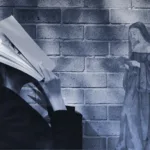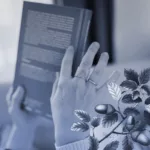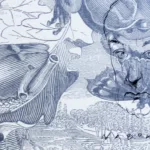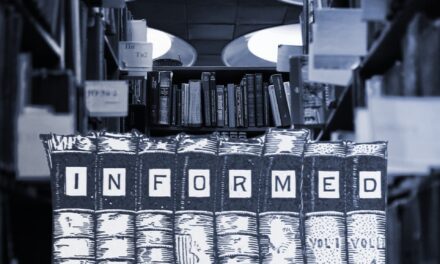
How do I write the found family trope?

“I’m working on a monster apocalypse story, but I’m struggling to make it unique. My focus is on the main character finding happiness and peace with his teammates, even though I plan to kill them off.
I want to explore how he will overcome his past abuse and traumas while not just portraying the team as a family. I want to depict them fighting together, growing stronger, and forming closer bonds because they have all lost their families at the start of the apocalypse.”
The Found Family trope.
Found family is a classic trope in stories. But that doesn’t mean it’s overdone and can’t be used to get deep into your characters’ interiority. In fact, this trope can pack a deeper punch than most think.
Sure, it’s easy to have a group in the story with you, the writer, telling how the characters work together–like how one is easily the “mom of the group,” for example. But if you want something much deeper between your characters, and want the trope to work on multiple levels of storytelling, you must show those group connections forming and existing. Get deep with the what, why, and how your found family became a tight-knit group and work well together.
To do this, there are a few questions to ask while creating your characters. These questions flow from basic character knowledge, to in-depth details as an exercise you can do at any time, and with any story or pair/group of characters.
Let’s get started!
What is each character’s personality/identity, and what role in the group are they assigned to because of it?
From friends, to couples, to even crime-fighting superheroes, each group is made up of personalities that fit into a role the group dynamic needs. And in most cases, it’s natural.
For example, let’s say we have two characters dating each other as a couple. One character is more savvy with their finances while the other is not. This can lead to the money-savvy character filling a role for the couple as the money manager (or one with money advice, if the other character wants to learn how to better manage money instead).
You can also have a kind-hearted and loving character act as a parental figure in the group. That is, if other characters tend to get into trouble often, are opposite of kind-hearted, or are without their real parents.
First, It’s important to know exactly who your characters are , how they act, how they respond in a crisis, and so on. Only then can you put together what each character can provide to the group.
It’s just as important to make each character in your group unique. Two jokers in a group is fine, but if they act exactly the same way, and think the same things, you may actually have two characters needing to merge into one, for the sake of redundancy.
Let’s use my book’s found family of superheroes for further example. I have:
- A broody, loves-to-research-type soul who’s stuck over the mysteries of his past.
- His twin sister, highly personable, yearns for outside validation, and prefers the past to stay as far away as it can.
- Their hot-headed childhood friend, who takes no issue picking fights and rises above any occasion with sheer tenacity.
- The oldest, but cheery and justice-oriented friend, says “dude” a lot, and is like a child stuck in a man’s body.
- His wife, a doctor with a heart full of gold, sass, and sees the team as misfits who are in trouble without her help.
- Finally, the reserved intellectual who keeps her words short, unless you start her on science, engineering, and intel gathering.
With this make-up, I can naturally set up the characters’ roles in the group, based on personalities alone. I label the broodster as the detective and problem-solver, his sister “the public face” of the group, the childhood friend the quick-witted action-taker, the oldest “dude” the honorable leader, his wife the classic “group mom” with extra flair, and the quiet one the scientist.
Notice how each character has their own core identity, and how that creates the role they play in the group. Yes, some characters, like my twins, will likely have a small overlap of quirks–just for being family. However, it’s still important to focus on what makes each character internally different. Otherwise you lose the chance of uniqueness in your group dynamic.
As a group, what is the primary goal they want to accomplish, and why?
As you finish putting each character together with their core identity and role, another question to ask is what goal they want to accomplish together.
Here’s another way to phrase it: Why are they together in the first place, and what stops them from going separate ways?
The Avengers band together to save New York against Loki and an alien invasion. They can’t do it by themselves . Harry Potter needs new relationships upon entering wizarding life, fueling him to face Voldemort. In season one of The Mandalorian, Mandalorian Din Djarin and Grogu must face Moff Gideon together, or die trying to face him alone.
None of those groups can separate because the stakes are too high to tackle alone. Each Avenger, Harry Potter, and the adorable Star Wars father-son combo will fail their missions without their found family.
My point: give your found family a goal to accomplish together. One they can only accomplish as that particular team. And make the stakes so high and personal for each character that it means death, literally or figuratively. This way, they can’t refuse to work together. No matter what happens. Make your plot and its conflict force them to involve each other. Otherwise, there is simply no reason to form a found family with each other.

What needs/desires do each character fulfill for one another in the group?
This is where we get into the juicy character interiority and backstory. Despite how it looks, the Found Family trope is much more than what “role” characters fit into for the sake of group dynamic.
It’s also how that dynamic affects each character; and how each character relates, or fills a need, for another.
Let’s go back to The Mandalorian for this example. Din Djarin is a lone wolf mercenary who lost his family at a very young age. While he found a new purpose as a Mandalorian, it’s still not what he needed: love, family companionship. This is where Grogu came in, and why Din was unable to hand Grogu over and complete a mercenary job.
We’re talking internal plot with characters–as in, what they need so they can accomplish their goals. Not what they think they need, and not just overcoming the external plot (in this case, facing Moff Gideon).
Din needed love and family, just as Grogu needed to discover his true self. These personal goals were accomplished with the help of the other. Grogu became the “son” that helped Din overcome self-limiting beliefs about newfound companionship, while Din provided Grogu the safety and protection to discover himself and his force powers.
Maybe you have a character who, on the outside, loves to goof around and tell jokes. But what do they really need as a human being to grow? Do they need a coming-of-age-moment that only one character in the group can provide? Do you have two characters, a childless mother and an orphaned boy, who seek a second chance of love, and can find it again through caring for each other?
Captain America may be the stoic leader butting heads with playboy philanthropist Iron Man, but even those two fulfill a desire the other has: Belonging. Acceptance. Companionship.
So take a look at one of your character’s backstory, and see what other members of the group can do–in their own individual way–to help that character heal and grow.
This, ultimately, is what gives the Found Family trope unique meaning and depth in your story. Because once you truly incorporate this trope into every aspect and detail of your characters and story like this (external plot and all), it cannot be done the same way again–because only you can write your story the way you can!
How to add further depth in the Found Family trope
There was no way I was answering this question without mentioning the one thing that could add even more connection and depth between characters.
Conflict.
Just as conflict is the best method to writing a story that works, it’s also the perfect tool for establishing a found family. There are two ways to do this:
- Have two or more characters in the group start as rivals or enemies, before adopting each other as a found family.
- Have your found family be completely dysfunctional at the beginning. Let the characters form a group, but act unsynchronized with each other; thus failing challenges together until they finally accept one another, their talents, and grow as one to achieve their goal.
Depending on how you write your found family, these points can be one and the same. But I felt it vital to differentiate between them for the sake of being thorough in explanation.
Conflict against a character in the story is what provides opportunity for growth (or failure, if writing tragedy). The more conflict the character must face, the more opportunities they have for the growth, and thus, the deeper the character development.
This is why so many people love edgy characters and redemption arcs (like Zuko in Avatar). For edge and redemption, a character must already be at a low point in order to rise back up from their failures, and succeed.
This same concept can be done with rivals/enemies in your found family. The relationship between two characters is at a low point, which then provides all kinds of conflict, and therefore creates growth for your characters (and found family) to experience. This is also why many like the enemies to friends/lovers tropes. The character development in the journey from rock-bottom to top, if done right, is a highly rewarding story.
For writing your found family as dysfunctional at first, the story is the whole group at a low point for not being able to work together properly. And they must face extra conflict for extra growth before they can accomplish other goals as one.
All in all, the more effort your characters must give to bond with others, the deeper the drama becomes, and the more rewarding the final bonding and connection. In most cases, it’s too easy, and not as fulfilling for a reader, if all characters already start off as good friends, or become friends quickly upon joining a found family. Give one character a trait or two another character doesn’t like. Have one character forced to learn and accept another for who they are. How their abilities, quirks, or other aspects can actually be a benefit.
This kind of conflict set-up matches perfectly with any story theme that involves one needing to set aside differences with another in order to succeed and/or survive. Once more, Avengers is the perfect example of it. They were a dysfunctional group of people that didn’t trust each other. But, after losing Coulson, only saving the world mattered.
And there you go! The simple, yet meaningful basics of how to write the Found Family trope and make it work for you. If you need more examples, a quick google search will hand you a plethora of stories you can use for reference and research.
Otherwise, I look forward to seeing your found families emerge in your story. Happy character plotting and writing!






























